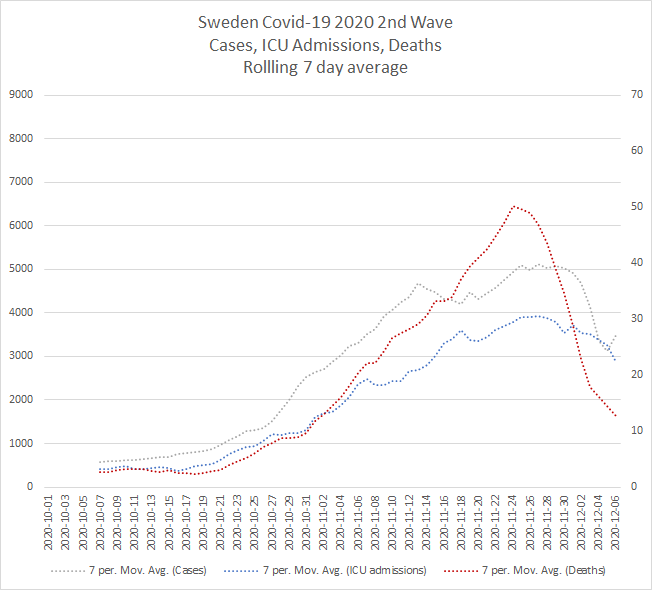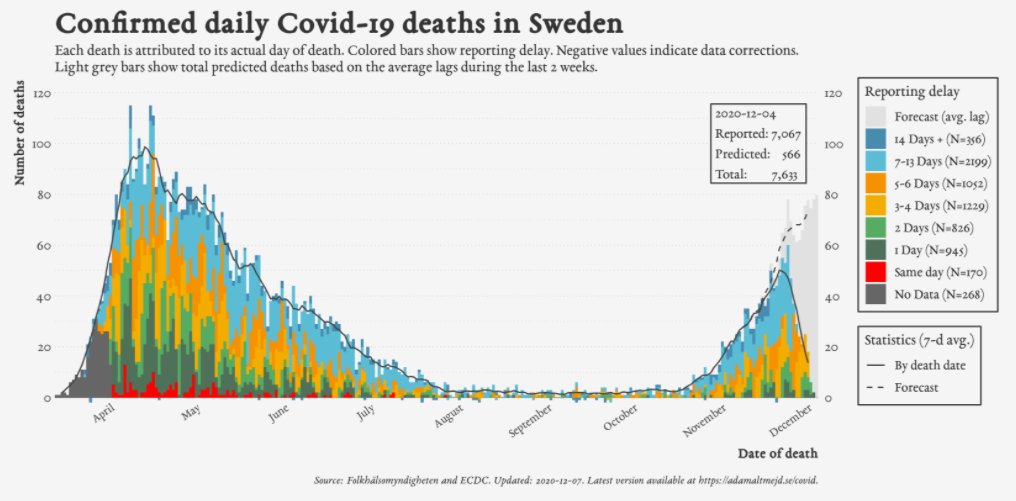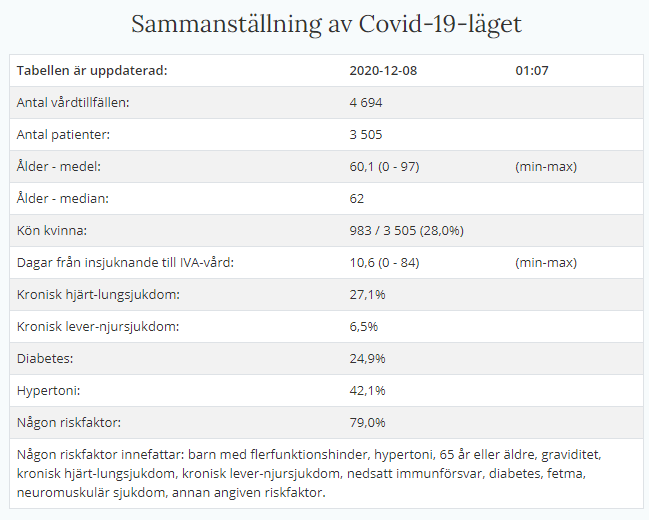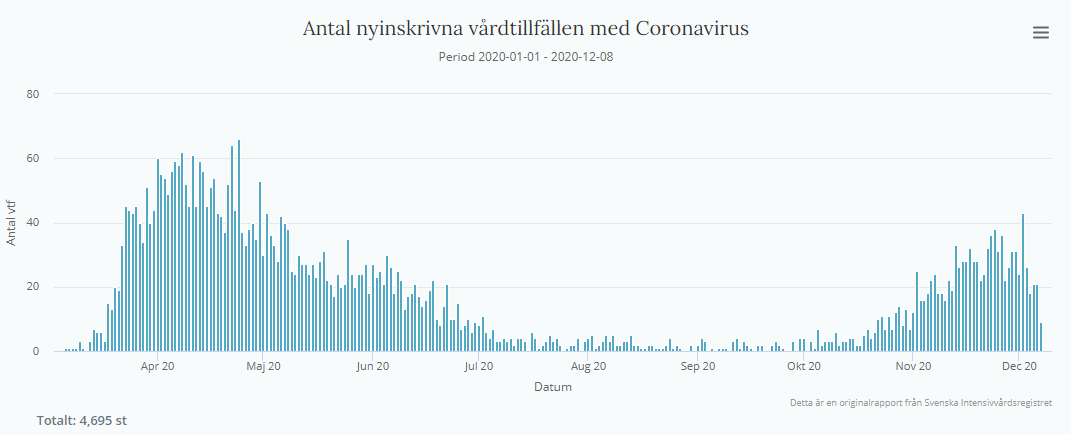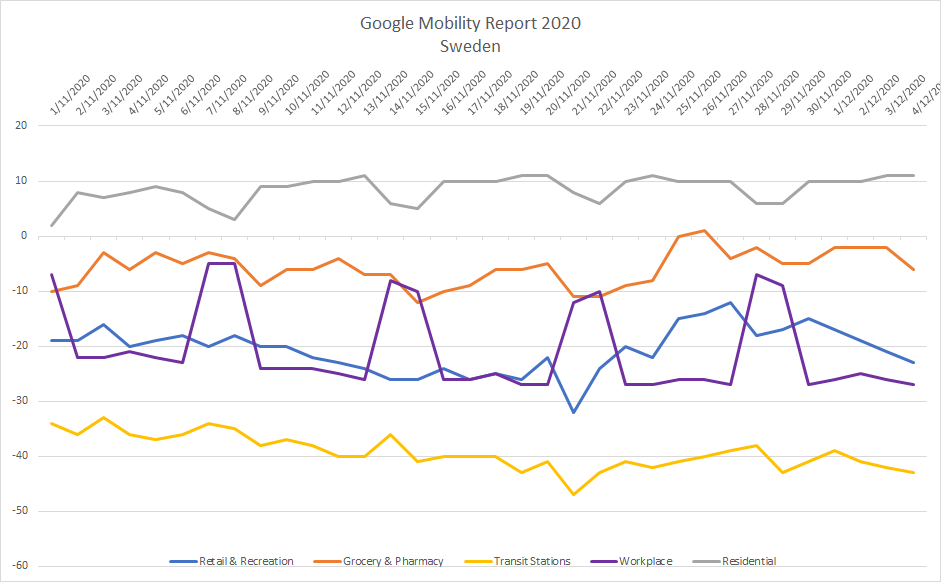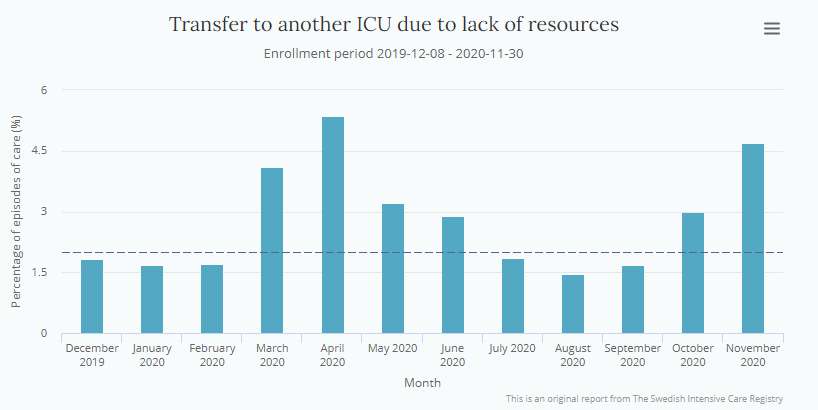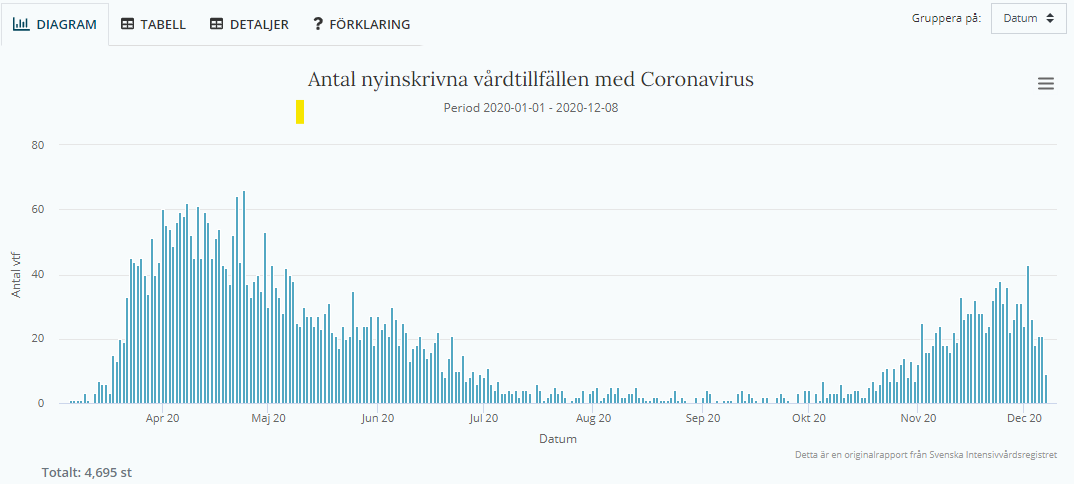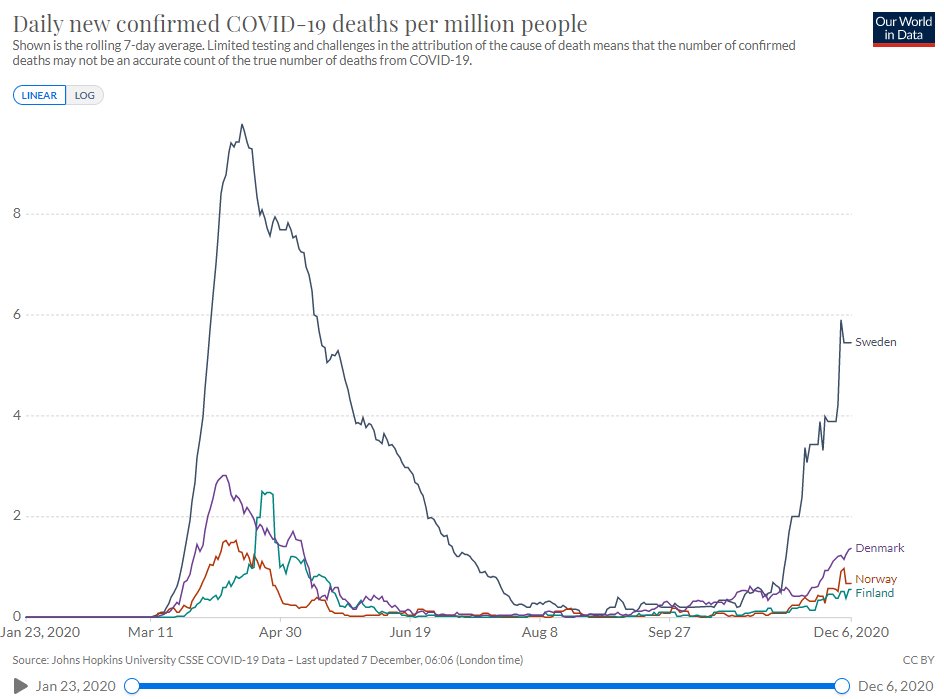Saw some tweets (and I think there was a news article?) talking about the apparently amazing correlation between ICU admissions and Mortality.
eh?
Why would you think it would be any different?
Infections->cases->hospitalisations->ICU->mortality are all correlated.
eh?

Why would you think it would be any different?
Infections->cases->hospitalisations->ICU->mortality are all correlated.
Each has it's own quirks -
Cases is affected by testing policy and rates
Hospitalisations/ICU/Mortality affected by age distribution of infections
ICU is affected by capacity and triaging policies
etc etc etc
Mortality affected by all of the above and treatments
Cases is affected by testing policy and rates
Hospitalisations/ICU/Mortality affected by age distribution of infections
ICU is affected by capacity and triaging policies
etc etc etc
Mortality affected by all of the above and treatments
On a straight comparison by reporting date, the data looks like this. Without any analysis necessary it pretty clearly it all correlates - exactly as you'd expect.
Now, the hope is that the plateau in ICU is soon going to be reflected in a plateau of mortality, and predictions (by me, @zorinaq, and @ECDC_EU that we'll likely pass wave 1 peaks in the next few weeks is wrong, and that @adamaltmejd projections are also wrong.
I think we all hope that is true, and there are some positive signs - for example the amount of time patients are spending in ICU has almost halved to just over 10 days thanks to better treatment. This I believe is the primary reason ICU has not already reached limits.
Outcomes are also significantly improving for those hospitalised. https://www.aftonbladet.se/nyheter/a/R9901A/battre-odds-for-covidsjuka-i-dag-an-i-varas
As I wrote back in June, treatment has potentially dropped mortality by 30% in the worst cases. It's one of the reasons I believe the Swedish strategy was always wrong - treatment for a new disease was always going to improve. https://twitter.com/DavidSteadson/status/1273591906627354624
So, are we shortly about to see a plateau of deaths below Wave 1, as ICU suggests?
Reasons to be hopeful -
* Growth in cases have slowed and perhaps even plateaued
* Testing has increased
* Growth in new ICU admissions appears to have slowed and perhaps even plateaued
Reasons to be hopeful -
* Growth in cases have slowed and perhaps even plateaued
* Testing has increased
* Growth in new ICU admissions appears to have slowed and perhaps even plateaued
* More NPI are in place nationally, such as now closing high schools and stricter limits on crowds
* Transit and workplace mobility stays low
* Transit and workplace mobility stays low
Reasons to be cautious -
* Retail mobility has gone up
* Many regions continue to restrict testing
* Numerous hospitals have reported ICU is full, triaging is likely
* ICU transfers due to lack of capacity remain high
* In spring, ICU data began to lag as demand increased.
* Retail mobility has gone up
* Many regions continue to restrict testing
* Numerous hospitals have reported ICU is full, triaging is likely
* ICU transfers due to lack of capacity remain high
* In spring, ICU data began to lag as demand increased.
* It was less than a week ago, Wednesday Dec 2, we had the biggest single day increase in new ICU patients since the May 2, with 41 admissions. Any "plateau" may simply be natural variance.
So what do I think? As I've been saying for weeks, what we're doing is slowing the virus down, but not enough. Do I still think we'll pass the wave 1 peak in mortality before Christmas ?
I think it's possible, but I'm hopeful. The closing of high schools means we now have stronger restrictions in place than in April, that will affect the infection and mortality rates over the coming 2 wks. The wild card is we don't know how much influence the weather had in April
Does this mean "the Swedish Strategy" is working?
That depends on your goal. It appears to be working enough to keep the spread of infection low enough so that health services doesn't collapse, which seems to be @Folkhalsomynd only real concern.
That depends on your goal. It appears to be working enough to keep the spread of infection low enough so that health services doesn't collapse, which seems to be @Folkhalsomynd only real concern.
But perhaps more importantly - and I think this is simply not emphasised enough - it's not working to minimise infections, and long-term this may have a far greater impact on Swedish lives and society than the mortality rate. https://twitter.com/AliciaEdin/status/1333731652384776193?s=20
As sad as each one is, it's likely that for every death reported there are dozens of people with long term health issues caused by SARS-CoV-2.
#longcovid is real, and you don't want it.
#stayathome as much as you can
as much as you can
#wearamask indoors and in crowds when you can't
indoors and in crowds when you can't
#longcovid is real, and you don't want it.
#stayathome
 as much as you can
as much as you can#wearamask
 indoors and in crowds when you can't
indoors and in crowds when you can't

 Read on Twitter
Read on Twitter